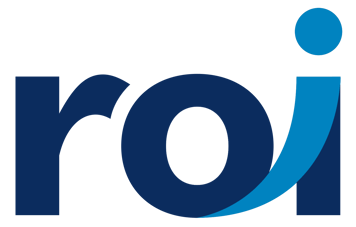
In 2018, a top priority for Healthcare CIO’s was EHR optimization projects. An EHRIntelligence.com article concluded that 71% of respondents agreed with a shift in focus from EHR implementation and deployment to optimization. Though most EHR optimization projects have historically been department-specific and clinical in nature, there is evidence from the small survey sample of 40, that revenue cycle efforts need focused attention. 73% of the respondents indicated that the large number of competing priorities, both internal and external, posed the biggest challenge.
An often overlooked category of optimization is centered around operational processes that can be tailored independent of health IT systems. While most providers agree that optimization of EHR and financial systems is required over time to meet regulatory and internal expectations, the financial benefits of changing basic processes and procedures is not the focus. For providers to truly maximize their technology investment in EHR systems, optimization efforts across both systems and processes must be considered a top priority. Are you ready to take control?
How can you ensure your EHR is meeting your providers’ needs?
Revisit your initial understanding and expectations of your EHR’s full capabilities.
Distribute a targeted EHR user feedback survey and summarize major themes and high priority items.
Review research from KLAS Arch Collaborative regarding physician satisfaction.
Consider using nursing informaticists to drive your optimization. Be strategic and place them at the frontline to effectively triage issues, make recommendations, and lead partnerships between providers, super users, and IT analysts across departments.
These steps will help you to collect candid feedback from your EHR users, which can be compared against industry benchmarks and leading practices, providing a baseline for future optimization efforts.
How can you identify process gaps within your organization?
Review helpdesk reports to identify daily pain points from specific user groups in the various departments.
- What are your users complaining about?
- What is the quality of your documentation?
- Are your workflows cumbersome?
- Are there issues capturing or accessing vital information within a specialty area?
Talk to a sampling of providers and other end users – they know the workarounds, gaps, and complaints.
Review policies and procedures to confirm alignment with departmental and organizational goals.
Review back-office reports to identify areas for revenue cycle improvement.
Top 9 EHR Optimization Takeaways...
CLINICAL - To create contextual, intuitive systems, and processes capable of giving providers the right amount of data, at the right time, without overwhelming them...
- Engage your providers in continuous improvement. They have a vested interest in quality and efficient patient care.
- Focus on Ancillary Systems – Laboratory, Radiology, GI, Therapies, and Dialysis departments drive the entire care continuum. Ensure these systems are performing well by conducting health checks periodically and scheduling upgrades in a timely manner.
- Promote Standardization. This improves clinical efficiency and transition of care.
Are you promoting system interoperability? Does your EHR vendor participate in networks working to standardize data across health data exchange platforms?
- Secure & Exchange Data. Data integrity for health information exchanges (HIEs) is critical. Comprehensive meaningful data expedites provider productivity and clinical decision-making.
- Workflow Efficiency. Are you using standardized workflows across your organization? If not, streamline reporting processes by generating the customized SQL/Crystal reports that bring pertinent data to your providers to aid in patient management.
- Be Quality Driven. Use the EHR's built in prompts and alerts to help improve the quality of patient care and end user’s satisfaction, as well as reduce the margin for error.
FINANCIAL - To generate cost reduction due to operational efficiency…
- Focus on data gathering. Your EHR is where all the patient information is gathered for value-based care. Detailed analysis and care delivery management can help to prove that the most cost-effective services were rendered.
- Scrutinize your hospital back-office functions, regardless of your technology platform and organization’s strategy. Who is responsible for follow up or periodic account audits?
- Be Compliant. As regulatory standards continuously change and have burdensome reporting requirements, optimization becomes an ongoing process to account for these changes. Medicare Access and CHIP Reauthorization Act (MACRA) and Merit-based Incentive Payment System (MIPS) have driven more widespread acceptance of EHR's and interoperability by incentivizing providers with reimbursements for appropriate Value- Based Care (VBC).
What should your long-term EHR optimization plan include?
A review of a Stanford Medicine survey, conducted by The Harris Poll, reveals that although American physicians see the value in EHR’s, additional focus should be placed on:
- Interoperability. 67% think more interoperable systems will help find better care solutions. At this point, patient data remains too fragmented.
- Predictive Analytics. 43% think securing infrastructure with analytics tools support quicker disease diagnosis, prevention, and population health.
- Integrated Financials. 32% think this will enhance patient understanding of care related costs and improve the perception of healthcare transparency.
Are you ready to engage in process and system optimization efforts?
While you consider your future needs, also read our revenue cycle blogs entitled:
“Denials: Stop Correcting the Problem and Fix the Issue”, to learn the many forms of claim denials, the reasons we need proactive denials management, and how to break the denial cycle by using a comprehensive denials prevention strategy.
“You Are Not Alone - The DNFB Challenge” to understand the common reasons that accounts are held in DNFB status, 6 steps to reduce DNFB’s, and how your back office can help as you streamline your process.
Engage ROI to help you prioritize and get on track!
ROI Healthcare is rated as a Best in KLAS for Partial IT Outsourcing and can provide the optimization experts you need to improve your organizational effectiveness and technology. With over 20+ years of clinical and financial expertise, we can demonstrate how proven strategies can streamline both clinical and financial processes and increase your bottom line.

